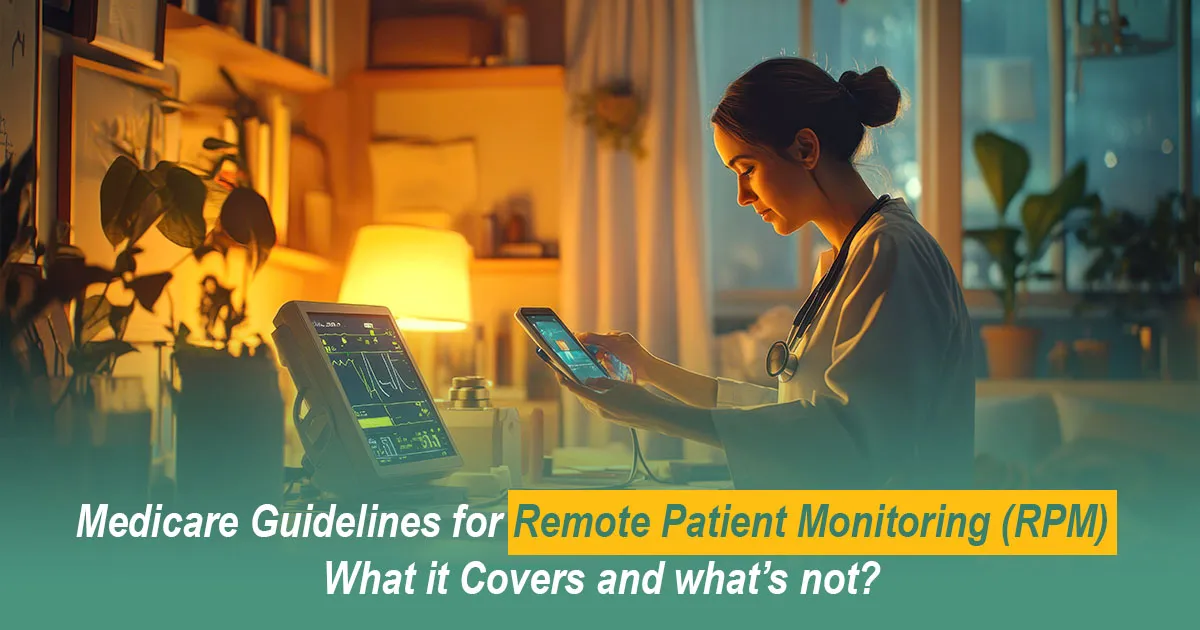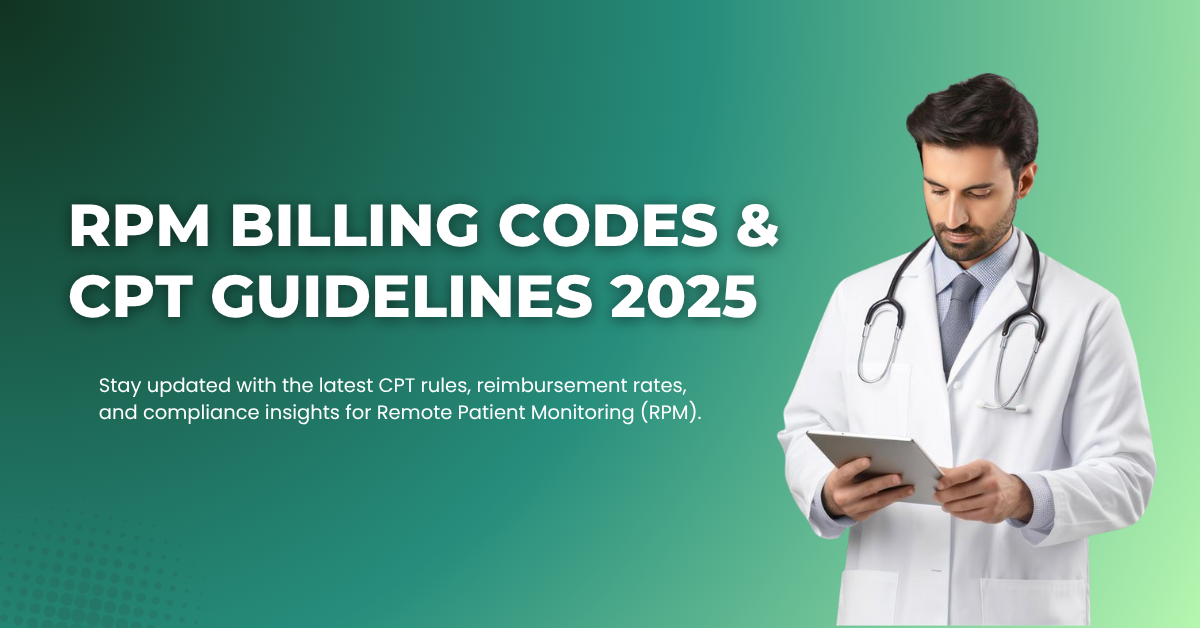_11zon.webp)
Posted By: Medsole RCM
Posted Date: Nov 11, 2025
Here’s the truth: the accuracy of DRG validation determines far more than how a single claim gets paid—it influences the entire financial rhythm of inpatient care. The DRG weakens, and revenue quietly disappears when the principal diagnosis is unclear, secondary diagnoses are incomplete, or key clinical indicators lack documentation.
What most providers see today is a different kind of payer—one that looks closely at MCCs, treatment choices, and even small inconsistencies between notes, labs, and vitals. Clean claims aren’t enough anymore. You need documentation that clearly reflects the patient’s story and coding strong enough to stand through RAC, MAC, and commercial audits. Accurate DRG capture isn’t a technical win; it’s what keeps inpatient revenue stable.
In 2025, DRG validation means making sure the principal diagnosis, secondary diagnoses, and all clinical indicators tell one consistent clinical story. When even one element is unclear, the DRG shifts. Strong DRG coding validation and inpatient DRG validation rely on documentation that supports both clinical logic and reimbursement accuracy.
Coding Validation
Accurate coding begins with a clean ICD-10-CM assignment and correct PDx sequencing rules. Coders must verify that all clinically supported secondary diagnoses—especially CC/MCCs—are fully documented. Procedure accuracy relies on precise ICD-10-PCS coding, ensuring MS-DRG outcomes don’t shift because of incomplete details or unclear operative language.
Clinical Validation
Whether the patient's story makes sense on paper is the key to clinical validation. Auditors study the clinical findings, the documented treatment plan, and the everyday evidence in labs, vitals, and nursing notes. When those pieces don’t match the stated diagnosis, documentation gaps appear—and payers immediately question severity, intent, and medical necessity.
Documentation Validation
Documentation validation examines the clarity and completeness of physician documentation. Missing severity terms or vague phrasing often require a clarification request to capture intent. When the record still lacks precision, coders follow compliant query escalation to ensure the clinical narrative fully supports accurate DRG grouping and payment integrity.
The financial impact of even minor DRG validation errors is often underestimated. A missed MCC, a misclassified OR procedure, or a PDx that isn’t sequenced correctly immediately lowers documented severity and reduces a hospital’s case mix index. What looks like a minor documentation slip can quietly move a claim from a high-paying DRG to a far lower tier. These RCM downgrade causes don’t stay isolated—they accumulate throughout the month, shaping IPPS reimbursement trends, influencing budgeting decisions, and affecting how leadership evaluates service-line performance. For hospitals already operating under thin margins, consistent DRG accuracy isn’t just a coding win; it’s a fundamental driver of financial stability and long-term revenue protection.
Here’s the financial reality: DRGs are paid based on relative weight, and even a slight drop in documented severity level can dramatically change the payment rate. When an MCC isn’t supported, or the PDx shifts from MCC → CC → Non-CC, the assigned DRG loses value immediately—regardless of how complex or resource-intensive the care truly was. Hospitals routinely absorb thousands in preventable losses because a single clinical indicator wasn’t documented or an MCC lacked explicit provider confirmation. These payment reductions then roll upward into CMI fluctuations, weaker monthly IPPS performance, and inaccurate forecasting. In short, DRG errors don’t just affect one claim—they ripple across your entire inpatient revenue cycle.
INSIGHT BOX
“More than 40% of inpatient revenue leakage comes directly from missed or weakly documented CC/MCC conditions—issues that are fully preventable with strong DRG validation workflows.”
|
DRG Description |
RW Before |
RW After |
Impact on Payment |
Cause of Downgrade |
Revenue Lost |
|---|---|---|---|---|---|
|
Sepsis w/ MCC |
1.87 |
1.06 |
Significant ↓ |
MCC unsupported by clinical findings |
–$6,200 |
|
Respiratory Failure w/ MCC |
1.93 |
1.20 |
Significant ↓ |
Missing ventilatory indicators |
–$7,100 |
|
Heart Failure w/ CC |
1.21 |
0.89 |
Moderate ↓ |
Incorrect PDx sequencing |
–$3,400 |
tav
These cases show how DRG downgrade causes—whether an overlooked MCC, a missing ventilatory marker, or incorrect PDx sequencing—can drastically shift relative weight and reduce payment. Even minor documentation gaps reshape reimbursement across entire inpatient populations, eroding CMI and weakening financial performance in ways many hospitals don’t immediately see.
Think of the DRG validation workflow the same way pilots approach a pre-flight checklist—every step protects documentation integrity, verifies correct POA status, and reinforces solid clinical validation before a claim ever leaves the HIM team. Skip one step, and the entire DRG validation process can shift unexpectedly, lowering severity and weakening reimbursement.
A reliable DRG validation checklist keeps auditors focused on the essentials that protect payment integrity and compliance. Every chart review starts by confirming that the PDx and SDx align with the documented clinical indicators and that documentation accuracy is consistent across notes, labs, vitals, and imaging. The auditor then checks whether each CC/MCC is clearly supported, verifies that the PCS code accurately reflects the procedures performed, and ensures all POA indicators are assigned correctly. Finally, they confirm the record supports both medical necessity and severity and that the coding matches the treatment plan and clinical timeline.
Many DRG mismatch problems come from avoidable documentation issues that weaken the clinical story. When notes don’t fully support conditions like acute respiratory failure, malnutrition, or AKI, coders can’t assign severity correctly. These DRG mismatch reasons lead to downgrades, denials, incorrect ventilator hours, and costly post-payment audits that could have been prevented with stronger documentation.
Most PDx errors begin when the documentation doesn’t clearly support the diagnosis chosen as the reason for admission. Coders must apply correct sequencing rules, read the clinical picture as a whole, and confirm the PDx aligns with the documented treatment plan. When the PDx is mis-sequenced, the DRG shifts immediately—often in ways that reduce severity and payment.
High-impact MCCs—like severe malnutrition, acute respiratory failure, and acute kidney injury (AKI)—are some of the most commonly missed conditions. They require precise documentation and clear clinical support. When these diagnoses are understated or never explicitly captured by the provider, the DRG drops to a lower tier, and hospitals lose substantial revenue that should have been secured.
Procedure-related mistakes are a major driver of DRG shifts. Misidentifying OR procedures, misclassifying Non-OR procedures, or incorrectly calculating ventilator hours directly affects MS-DRG assignment. Even a small PCS coding error can move a case into a lower-paying DRG, causing unnecessary financial loss and avoidable rebilling work.
· Wrong PDx selected
· Incorrect PDx sequencing
· Unsupported sepsis indicators
· Missing AKI clinical criteria
· Malnutrition not documented by severity
· Ventilator hours miscalculated
· OR vs. Non-OR misclassification
· Incorrect POA indicators
· Missing CC/MCC documentation
· Procedures lacking clinical narrative support
The easiest way to show the impact of DRG accuracy is through real cases. These examples reveal how DRG reassignment rules, missed cc/mcc capture, or unclear clinical findings can shift severity, alter SOI/ROM, and significantly change reimbursement. When the treatment plan doesn’t match the documented diagnoses, the financial consequences are immediate—and often substantial.
A patient admitted for pneumonia begins to deteriorate quickly. The clinical indicators—fever, tachycardia, leukocytosis, rising lactate—clearly support sepsis, yet the physician's note documents only “pneumonia.” When sepsis isn’t stated explicitly, the entire DRG validation chain falls apart. Adding acute respiratory failure with ventilator support changes the patient’s SOI, modifies ROM, and shifts the case into an MCC tier that reflects the real treatment plan and clinical intensity delivered.
· Without MCC: DRG 195 (Pneumonia w/o CC/MCC)
· With ARF MCC: DRG 189 (Pneumonia w MCC)
· With Sepsis MCC: DRG 871/872 shift
Financial impact: $5,000–$8,000 in additional reimbursement.
A patient’s creatinine jumps from 0.9 to 2.1 mg/dL in just 24 hours, and nursing notes describe clear oliguria. Yet no physician note mentions “acute kidney injury.” Even though the clinical findings and lab trends meet AKI criteria, the missing provider statement creates documentation gaps. The MCC is lost, the DRG drops, and the hospital misses revenue tied directly to the actual severity of the case.
Lost revenue: ~$6,500 due to omitted AKI documentation.
Scenario C—Malnutrition (Moderate vs. Severe)
A dietitian documents severe malnutrition, but the physician simply notes “poor intake.” Without the provider confirming severity, the MCC disappears, and the DRG loses its higher tier. This shifts severity, lowers RW, and reduces SOI/ROM, even when the patient’s condition warrants an MCC-level designation.
· Severe malnutrition MCC DRG → High RW
· Moderate malnutrition (CC DRG → Lower RW)
Revenue impact: $3,000–$5,000 lost from misaligned documentation.
A true DRG audit looks beyond the code set and into the clinical reality behind it. During a DRG quality review, auditors compare diagnoses against lab values, vital signs, imaging, and ordered treatments to confirm medical necessity. When the clinical story doesn’t support the coded condition—especially MCCs—they flag the case and initiate appropriate query triggers.
Auditors evaluate each condition by comparing documented findings to the expected clinical picture. They look for consistency across lab results, interventions, vitals, and whether the clinical course supports medical necessity. When evidence is incomplete or unclear, the case often requires a physician query to strengthen the record.
Condition
Required Evidence
Clinical Indicators
Likely Query Trigger
AKI
Rising creatinine levels
Decreased urine output (UOP)
Creatinine trends unclear or missing
Respiratory Failure
ABGs, O₂ saturation
Ventilator or high-flow support
Inconsistent oxygen documentation
Sepsis
Lactate, WBC, HR trends
Organ dysfunction signs
SIRS or SOFA criteria are not fully supported
Auditors depend heavily on whether interventions match symptoms and whether the diagnosis reflects the patient’s actual severity. Any disconnect between evidence and condition raises immediate concerns.
Payers closely scrutinize charts for inconsistencies that weaken clinical support. Claims are commonly denied when they contain:
· Unsupported MCCs, such as respiratory failure without ventilatory indicators
· Weak or incomplete sepsis indicators
· Severity documented inconsistently across nursing and physician notes
· Major documentation gaps between the diagnosis and the clinical picture
These issues create high-risk profiles that trigger RAC/MAC reviews, retrospective audits, and potential repayment demands—often long after the claim was paid.
A DRG mismatch happens when coded data doesn’t reflect the patient’s true severity or the story documented in the chart. Most DRG mismatch causes come from vague documentation, missing CC/MCC specificity, or misinterpreted clinic coding rules. Because payers apply strict, predictable payer logic to validate severity, even minor inconsistencies can trigger downgrades, denials, and costly rebills.
DRG mismatches usually trace back to breakdowns in the clinical story. Common causes include:
· Missing or unclear secondary diagnoses
· Incorrect PDx sequencing rules
· Weak clinical indicators for MCC-level conditions
· PDx that doesn’t match the treatment patterns
· Under-documented complications that change severity
Each misstep disrupts the chain of severity and alters the final MS-DRG, often pushing the claim into a lower-paying tier.
A structured approach to DRG mismatch correction protects both revenue and compliance:
1. Identify the mismatch in MS-DRG output
2. Conduct a complete documentation review for accuracy and clarity.
3. Validate diagnoses against vitals, labs, imaging, and other clinical indicators.
4. Issue a compliant provider query, using proper query escalation when clarity is needed.
5. Correct the code set and reapply the MS-DRG grouper.
6. Align PDx/SDx logic with payer expectations and approved payer logic
7. Submit the corrected claim with complete documentation support.
By following this workflow consistently, teams reduce rework, prevent repeat errors, and build stronger resilience against RAC/MAC audits.
CDI specialists are the anchor of clinical documentation integrity. They bridge the gap between what was done clinically and what is documented in the chart, ensuring diagnoses are explicit, supported, and tied to the care actually delivered. Any ambiguous phrase, incomplete condition, or unclear severity should prompt CDI queries for DRG validation—written in compliant, neutral language that simply requests clarification, not direction. When CDI leads the documentation conversation proactively, DRG accuracy improves, denials fall, and providers gain a clearer understanding of how documentation shapes both clinical quality and reimbursement.
Specific diagnoses consistently require clarification because they directly impact severity and DRG assignment. Common CDI query triggers include:
· Potential respiratory failure without ABG or oxygen documentation
· Encephalopathy is described only through vague mental status changes
· Heart failure missing “acute,” “chronic,” or “acute on chronic” specificity
· Sepsis indicators that don’t fully meet clinical criteria
· Nutritional issues where severity isn’t clearly stated
These triggers help CDI protect the accuracy of the medical record and prevent severity loss.
Compliant, non-leading CDI queries strengthen documentation without influencing provider judgment. Examples include:
· “Can you provide a clarification regarding the severity of malnutrition based on the patient’s weight changes and intake?”
· “Based on ABGs and oxygen therapy, can you confirm whether acute respiratory failure is present?”
· “For documentation accuracy, can you specify whether the kidney injury is acute, chronic, or acute on chronic?”
· “Given the patient’s lactate and vital trends, is sepsis clinically supported?”
When uncertainty remains, CDI uses query escalation pathways to ensure the clinical picture is accurately captured.
“Effective CDI collaboration improves DRG accuracy by 17–25%.”
Understanding the difference between APR-DRG and MS-DRG is essential for any hospital working across multiple payer types. MS-DRG models rely heavily on MDCs and CC/MCC tiers, while APR systems focus on SOI and ROM, capturing the full clinical complexity of a patient. In mixed-payer environments, providers must document with enough depth to support both systems—because each uses a different method to define severity level and determine payment.
MS-DRG classification is built around three core components:
· MDCs to group diagnoses by body system
· CC/MCC logic to define the level of severity
· Relative weight (RW) to determine payment value
This system depends heavily on documentation clarity. Missing specificity lowers RW and reduces reimbursement—even when the patient’s actual acuity is high.
APR-DRG calculates severity more dynamically by incorporating:
· SOI (Severity of Illness)
· ROM (Risk of Mortality)
· Four severity levels applied to every diagnosis
APR models reward detailed documentation. The richer the clinical picture, the more accurately SOI/ROM reflects the patient’s true condition—often resulting in higher severity levels and more appropriate payer reimbursement.
Feature
MS-DRG
APR-DRG
Payment driver
CC/MCC severity tier
SOI & ROM
Severity levels
Non-CC, CC, MCC
Levels 1–4
Documentation impact
High
Very High
Used by
Medicare & many payers
Commercial & Medicaid plans
The truth is, Medicare DRG rules never stay still. Every year, CMS IPPS updates shift the way DRGs are grouped, how severity is scored, and what CMS expects to see in the chart. That’s why coding and CDI teams rely heavily on AHA Coding Clinic guidance—especially for gray-zone diagnoses like sepsis, respiratory failure, and malnutrition. When even one annual update is overlooked, the impact shows up quickly: more denials, more rework, and a much higher chance of landing on a RAC auditor’s radar.
Each fiscal year, CMS introduces new documentation requirements, DRG reassignments, and logic changes that directly influence severity level and relative weight. When teams miss these updates, cases are coded with outdated rules—leading to preventable denials, underpayments, or incorrect DRG assignments. Annual IPPS briefings should be mandatory for coding, CDI, and audit staff to keep documentation aligned with current standards.
RAC and MAC auditors consistently target conditions where documentation is often incomplete or inconsistent. High-risk areas include:
· Weak sepsis indicators that don’t meet clinical criteria
· Under-documented acute respiratory failure
· Malnutrition severity is not clearly supported
· Respiratory treatments not aligned with vitals
· Incorrect or unclear POA indicators
These issues fall into high-cost RAC audits, where even small documentation gaps can trigger repayments and retrospective DRG downgrades.
Hospitals depend on structured DRG validator platforms and MS-DRG groupers to ensure coded data accurately converts into the correct DRG assignment. When grouper logic, ICD-10-PCS precision, and the clinical narrative all align, the DRG assessment process becomes cleaner, more predictable, and far less vulnerable to post-bill corrections or payer challenges.
The MS-DRG grouper transforms coded data into final DRG categories by applying MDC logic, CC/MCC severity rules, and appropriate severity level calculations. When documentation and coding are aligned, the resulting relative weight accurately reflects the patient’s complexity—and ultimately defines the payment the hospital receives.
PCS validation tools help coders confirm PCS accuracy, ensuring that distinctions between OR procedures and non-OR procedures are captured correctly. Since PCS errors remain one of the most common drivers of DRG changes, these tools are essential for preventing avoidable DRG shifts and costly rework.
Modern EHR and audit platforms support both concurrent review and post-bill audit workflows. They allow auditors and CDI teams to compare coded diagnoses against clinical indicators, track documentation gaps in real time, and identify mismatches before a claim is finalized. When used consistently, these tools significantly reduce denials and protect DRG integrity.
Accurate DRG validation does far more than produce clean claims—it strengthens the entire financial structure of a hospital. When documentation tells a complete story and coding reflects the true clinical picture, organizations gain tighter payment integrity, smoother claim approval, and stronger inpatient coding compliance. Fewer denials, fewer payer challenges, and higher audit readiness follow naturally. Over time, this discipline increases financial impact by protecting CMI, capturing severity reliably, and improving how leaders forecast performance. For hospitals looking to elevate DRG optimization, this alignment becomes the foundation for steady, predictable revenue.
On the operations side, accurate DRG validation reshapes how teams work. Stronger coding accuracy reduces back-and-forth communication, lowers rework, and drives better denial prevention. DRG-related edits disappear, and the case mix stabilizes as severity is captured consistently. Coders spend less time fixing old claims and more time ensuring charts are accurate before submission—boosting efficiency and improving overall throughput.
At the strategic level, continuous DRG accuracy helps leaders better understand how well things are really going. Reliable severity capture stabilizes CMI, ensures that the quality of care matches the level of severity, and helps hospitals plan their budgets more effectively. Such information helps managers make better decisions regarding hiring, budgeting, adding services, and planning for the future. In many companies, getting the right DRG capture is one of the best ways to figure out how well the hospital is doing financially.
Hospitals that consistently perform well share one mindset: they treat DRG validation as a core clinical responsibility, not a coding task. When documentation is clear and complete, coders capture actual severity, CDI closes gaps early, and providers understand how their decisions shape both quality and reimbursement. This alignment strengthens the clinical story, reduces ambiguity, and ensures each case reflects the care delivered with accuracy and integrity.
Over time, that discipline becomes a financial advantage. Strong DRG validation improves coding accuracy, enhances audit readiness, protects revenue integrity, and gives leadership confidence in forecasting. If your organization wants help refining your documentation workflows or strengthening DRG accuracy, MedSole RCM can support you with expert-led audits, CDI collaboration, and inpatient coding guidance. Sometimes a second set of eyes is all it takes to transform financial outcomes.
Recent Blogs

Posted Date: Jun 24, 2025

Posted Date: Jun 26, 2025

Posted Date: Jun 28, 2025

Posted Date: Jun 30, 2025

Posted Date: Jul 02, 2025

Posted Date: Jul 04, 2025

Posted Date: Jul 07, 2025

Posted Date: Jul 09, 2025

Posted Date: Jul 11, 2025

Posted Date: Jul 14, 2025

Posted Date: Jul 16, 2025

Posted Date: Jul 18, 2025

Posted Date: Jul 22, 2025

Posted Date: Jul 23, 2025

Posted Date: Jul 25, 2025

Posted Date: Jul 28, 2025

Posted Date: Aug 01, 2025

Posted Date: Aug 04, 2025

Posted Date: Aug 06, 2025

Posted Date: Aug 08, 2025

Posted Date: Aug 11, 2025

Posted Date: Aug 14, 2025

Posted Date: Aug 18, 2025

Posted Date: Aug 20, 2025

Posted Date: Aug 25, 2025

Posted Date: Aug 27, 2025

Posted Date: Aug 29, 2025

Posted Date: Sep 03, 2025

Posted Date: Sep 05, 2025

Posted Date: Sep 08, 2025

Posted Date: Sep 15, 2025

Posted Date: Sep 18, 2025

Posted Date: Sep 22, 2025

Posted Date: Sep 24, 2025

Posted Date: Sep 26, 2025

Posted Date: Sep 29, 2025

Posted Date: Oct 02, 2025

Posted Date: Oct 13, 2025

Posted Date: Oct 16, 2025

Posted Date: Oct 23, 2025

Posted Date: Oct 27, 2025

Posted Date: Oct 28, 2025

Posted Date: Oct 30, 2025

Posted Date: Oct 31, 2025

Posted Date: Nov 03, 2025

Posted Date: Nov 05, 2025
_11zon.webp)
Posted Date: Nov 11, 2025
.webp)
Posted Date: Nov 14, 2025